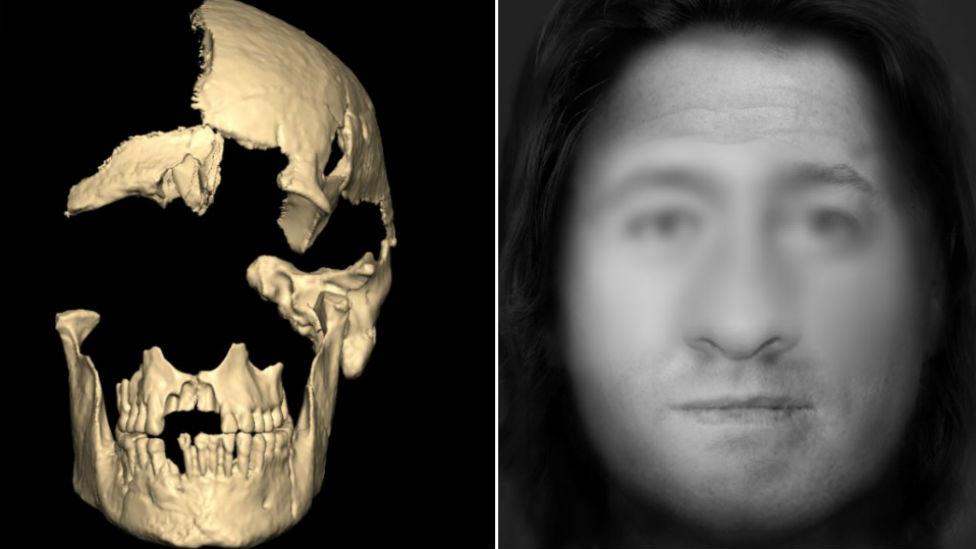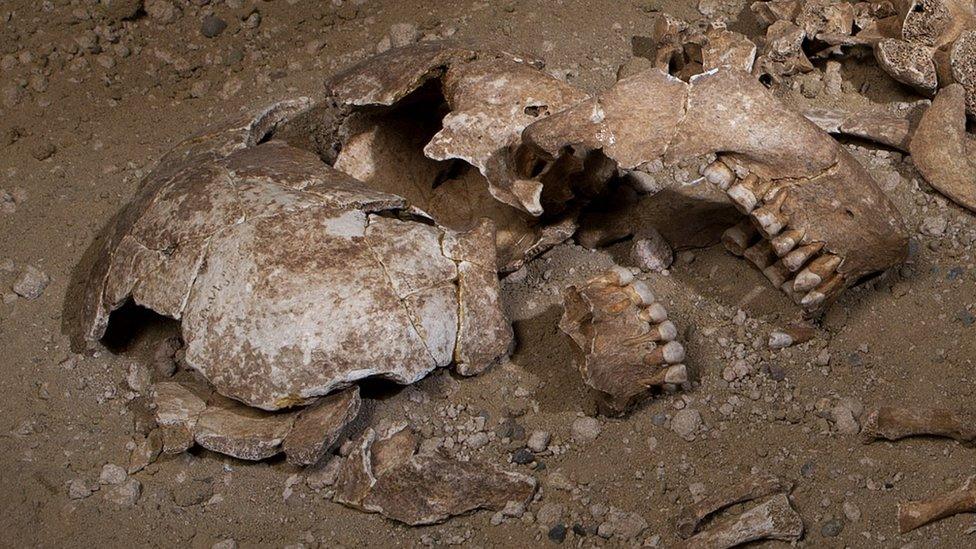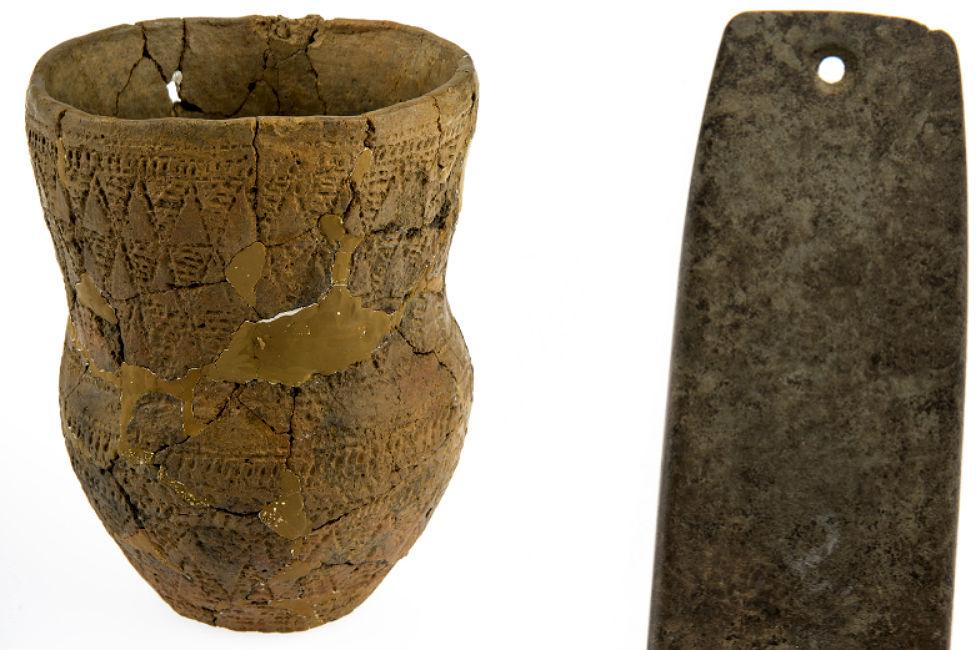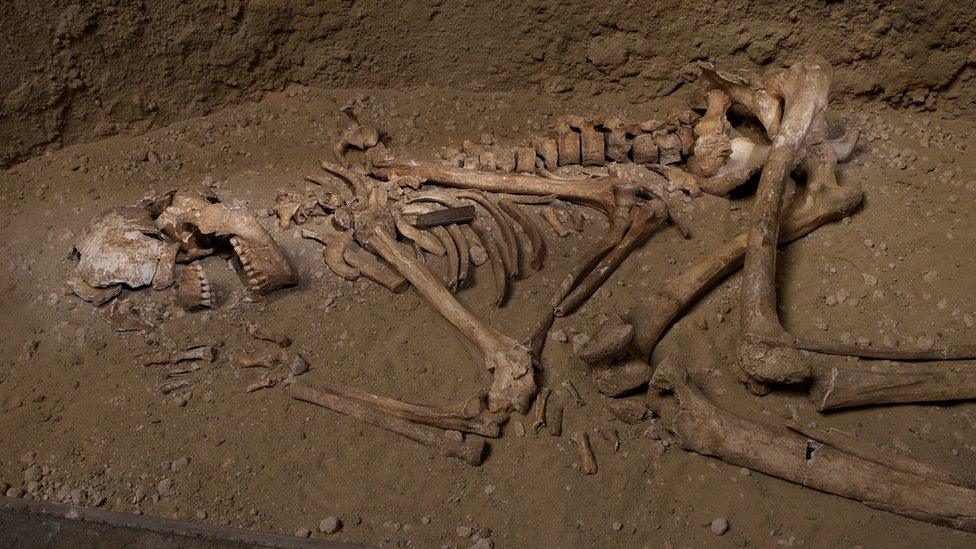Derbyshire Bronze Age farmer's skeleton 'humanised'
- Published

Facial reconstruction of man who died in Derbyshire about 4,000 years ago
The face of a man who lived 4,000 years ago was reconstructed using 3-D digital technology to "humanise" him, a museum has said.
The man's remains were found in Derbyshire, in Liff's Low bowl barrow, external burial mound, in the 1930s.
The skeleton has been in Buxton Museum's collection for about 30 years.
Joe Perry, who looks after the exhibits, said it was important to put a face to the Bronze Age remains.

The skull of the Liff's Low man was found damaged inside a stone box
The face of the man was revealed by a team at Liverpool John Moores University.
Caroline Wilkinson, from Face Lab, said the technique was previously done with clay.
She said: "It's always a bit of a thrill [to see it work] on ancient persons. It's a surprise to people when they look like us, it creates more empathy."

A type of beaker (left) and a stone pendant (right) were found with the remains
The project came as part of a successful Heritage Lottery Fund bid to connect Buxton Museum's collections to the landscape.
Joe Perry, assistant collections officer, said there was a "need for humanity" with the Liff's Low skeleton.
"We need to make people think about the skeleton as a person who lived and worked in Derbyshire," he said.
"We have a duty of care to the deceased, we wanted to emphasise that these are people."

The skeleton of the Liff's Low man will be displayed with the 3-D image at the museum in September
Mr Perry believes the Liff's Low man, who could have been about 35 when he died, spent his life farming within a small community, in what is now the Peak District.
It is believed that a stone box he was buried in collapsed and caused the damage to the front of the skull.
The other side of the face had to be mirrored in order to predict what he looked like.
The museum is due to be reopened, external in September.